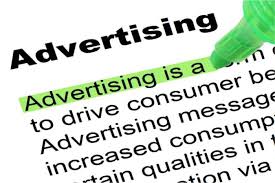As a publisher, it’s crucial to stay ahead of the game regarding advertising trends. And there’s no denying that programmatic advertising is here to stay despite AI. In 2023, programmatic advertising is projected to grow even faster than before, with spending estimated to surpass $120 billion. This means that programmatic advertising is not only increasing, its booming. Take advantage of your share of this lucrative market. Embrace programmatic advertising and see the benefits it can bring to your business.
In this article, we will explore the various aspects of programmatic advertising and provide a comprehensive understanding of this important topic.
Programmatic advertising definition: what is it?
Programmatic advertising meaning includes the following: The process of using technology to buy and sell ad inventory through an automated and data-driven procedure. It also represents most types of ad spaces on all screens including video, mobile, native and display ads. The term gets used a lot within the digital advertising industry and often relates to areas such as real-time bidding (RTB), remnant inventory and open auctions.
How it got started: A brief history

Before we get into the technical details, it’s best to show you how programmatic got started in the first place. Let’s rewind back to the early stages of the internet. Buying an ad space online was a much simpler process than it is today. It originally started with a relationship between publishers and advertisers.
The advertiser is also known as the buyer and the publisher as the seller.
The goal of the Advertiser normally was to reach their target market or audience and to influence them to perform some action. This action could be to make a purchase, build brand awareness, promote an event, etc.
The goal of the Publisher was to build a web property that contained intriguing, entertaining and useful content to attract an audience the advertiser would want to reach with their marketing campaigns.
Agencies then started helping advertisers to achieve their marketing goals and communicate with their target audience. It was the job of media planners to create media plans to target the right audiences and subsequently to communicate with the publishers that had access to those audiences. However, the internet started to grow at an unprecedented rate, and a massive oversupply existed.
It resulted in a tonne of ad inventory left unsold and not being monetized. Publishers grew at a much quicker rate than advertisers and it was getting harder for advertisers to consume the supply available to them.
Next, a new group within the advertising ecosystem emerged and called themselves Ad Networks. What this group did was categorize a publisher’s unsold ad inventory making it easy for media planners to consume, access and include it within their media campaigns.
It resulted in online media evolving into premium and remnant ad inventories. Premium ad inventories were sold the original way with a direct relationship between advertisers and publishers. Remnant ad inventories were the unsold or leftover ad space of a publisher that got sold through ad networks.
This meant that agencies had more than one channel to source ad inventories for their advertising partners. This video explains it in a similar manner.
With this new development, the selling process became more complicated for publishers, and they had to find a way to manage who was gaining access to their inventory for resale to agencies and advertisers. That is how an SSP or Supply Side Platform was invented.
An SSP helps publishers maximize their revenue earned through ad networks by acting as a layer between publishers and third-party advertising networks. Supply Side Platforms give publishers control over their ad inventory and help them dictate how it is sold and delivered to ad networks. With SSP’s, a bidding environment was created to help publishers extract the most revenue possible for their ad inventories.
At the other end of the spectrum, DSP’s or Demand Side Platforms started to emerge to assist agencies and advertisers with the buying side. A DSP is defined as an infrastructure that enables advertisers and agencies (buyers) to manage their media buying via a single platform.
DSP’s and SSP’s developed and improved their technology leading to an infrastructure integrating both platforms and allowing buyers and sellers to perform programmatics with real-time bidding or RTB.
Using all these automated and data-driven techniques resulted in a programmatic way to buy and sell digital media. Which created the term programmatic to categorize the industry.
Real-time bidding (RTB)
RTB is an integral ingredient within the programmatic industry. Originally advertisers would buy impressions in bulk, but it was hard to differentiate one particular type of audience from another. If the advertiser was promoting a travel product aimed at the senior market over 50, but within the impression range, there were also audiences within the 20-30-year-old range not interested in traveling it would mean that the whole audience would see the same ad.
You can imagine that this is not a very efficient way to spend your advertising budget.
With Real-time bidding, an auction environment was created where advertisers can show specific ads to a particular set of audiences based on data points about that audience. As a result, the advertiser can now programmatically display his travel ad only to senior audiences older than 50 and who is interested in traveling instead of losing impressions on an uninterested or non-targeted audience.
In other words using data, machine-learning technology and a set of tools RTB makes sure that ads are delivered to the right audience via programmatic inventory.
You can also watch this video from the IAB to learn more about Real Time Bidding.
Different types of programmatic advertising explained
Before we expand on different types of programmatic explained, let’s take a quick look at the benchmarks defined by the (IAB) which is also known as the Interactive Advertising Bureau.
Reserved inventory
This is when a particular area within a web property gets allocated to a publisher for a settled rate. This could include an agreed upon ad size, a frequency of ad display and time frame.
Unreserved inventory
This is the exact opposite of reserved inventory where a publisher makes a particular location on his website available for ad spots since inventory is only sold directly. The unreserved or remnant inventory gets sold through third-party ad networks and other ad exchanges via Real-time bidding (RTB).
Fixed price
Originally fixed price was the way to go through human interactions and negotiation. Even though programmatic rules the online media buying industry fixed price negotiations still exist.
Auction pricing
This is when RTB comes into play, and the ad inventory of a website is categorized and set up for sale to advertisers.
Now that you understand the standard of industry criteria let’s take things further and dive into the different types:
Programmatic direct
This is also called automated guaranteed and happens when a buyer gets a hold of a publisher’s ad inventory at a fixed price. This inventory also happens to be reserved and is very similar to the old way of trading inventory where a direct sales team is involved. Third party companies and a particular set of platforms are required to add control and ensure delivery.
Preferred deals
Preferred deals are also referred to as unreserved fixed rates and relate to the ad inventory not being reserved, but the price agreed upon beforehand. As with programmatic direct, there needs to be a direct line of communication between the advertiser and the publisher. You can read more about this programmatic ads example classification here: Private Marketplace or Preferred Deals Explained.
Exclusive Auctions
This is also referred to as invitation-only auctions and covers private marketplace deals where inventories are sold by a group or single premium publisher. An auction takes place between exclusive advertisers that only gain access by invitation.
Open auction RTB environment
This is when a technology-based bidding environment is created for advertisers to bid on remnant ad inventories of publishers. This option can give advertisers and agencies quick access to a wide range of publisher inventories on a global scale.
Programmatic video, mobile, and native advertising

Programmatic advertising has come a long way since its early days of being primarily associated with display advertising. In 2023, programmatic advertising has diversified into mobile, video, and native advertising.
This is a testament to the power and versatility of programmatic advertising. By using data and automation, programmatic allows advertisers to deliver personalized, relevant, and engaging ads to their target audience at scale.
Native programmatic advertising allows brands to deliver relevant content seamlessly within the publisher’s website or application. Programmatic native advertising continues to grow its reach, with more publishers enabling native ads on their websites. This advertising channel is affected by ad blockers much less than display advertising, which greatly benefits the programmatic industry.
Video programmatic advertising has become increasingly popular, and with the rise of streaming platforms and connected TV, it’s expected to continue to grow in the coming years. Programmatic mobile advertising is also a hit as consumers spend more time on mobile devices, and brands are turning to programmatic to reach them effectively.
Mobile video ad spending is expected to continue growing in the coming years. As consumers spend more time on mobile devices and the availability of high-speed mobile internet continues to expand, mobile video is becoming an increasingly popular format for both advertisers and consumers.
Programmatic advertising is no longer a niche channel; it’s a mainstream and essential part of the advertising landscape.
Benefits & features of programmatic advertising

Programmatic ads present an almost endless amount of advantages to both buyers and sellers. Making data-driven decisions removes the guesswork advertisers had before programmatic trading existed. Here are a few benefits you should be aware of:
#1 – Good for your budget: Programmatic advertising makes use of data to serve impressions to a chosen audience. This increases chances for conversions and means less money lost on ineffective advertising.
#2 – Improved targeting: Many different data points and key performance indicators can be used to target an audience which makes reaching the right audience much easier.
#3 – Advertising campaigns are managed efficiently: Campaigns can be adjusted and monitored as needed with very little time and effort.
#4 – Quick access to inventories: Within the programmatic advertising ecosystem buyers and sellers efficiently connect to each other. Advertisers can reach audiences via publisher web properties faster than ever before and on multiple devices and platforms.
#5 – A time-saving approach: Programmatic ad buying aims to cut out the human element as much as possible which means less time spent making deals and brokering specific price points.
#6 – Greater reach: With programmatic software, you can reach potential customers worldwide by placing ads within multiple ad networks, partners, channels and geographical locations.
See more benefits knowonlineadvertising.com.
Software and tools
As a publisher, you’re in a unique position to benefit from the vast array of Ad Tech companies and programmatic advertising tools available today. The programmatic landscape can initially seem overwhelming, but it doesn’t have to be. Some of the most widely used programmatic advertising software and tools are already trusted by industry leaders like MonetizeMore and many other advertising companies. One of the most popular and widely used is Google Ad Manager. This powerful platform offers a comprehensive suite of tools that can help you manage, optimize, and monetize your inventory and access a wide range of demand sources. By leveraging these top-notch programmatic advertising tools, you can streamline your operations, increase revenue and gain valuable insights into your audience. As a publisher, staying ahead of the curve and taking advantage of the best programmatic advertising tools available is essential.
To get access to Google AdX, Click here.
Programmatic Advertising Trends for 2023

- Increased focus on privacy and data security: As privacy concerns continue to grow, brands and advertisers will place a greater emphasis on data security and compliance with regulations such as the General Data Protection Regulation (GDPR) and the California Consumer Privacy Act (CCPA).
- Growth of OTT and CTV advertising: With the rise of streaming platforms and connected TV, over-the-top (OTT) and connected TV (CTV) advertising is expected to become increasingly popular among advertisers looking to reach audiences on these platforms.
- Expansion of programmatic audio: Programmatic audio is becoming more prevalent as brands seek to reach consumers through new channels, including podcasts and streaming music services.
- The emergence of 5G: The roll-out of 5G networks is expected to lead to faster and more reliable mobile connections, which will in turn drive the growth of mobile video and other forms of programmatic advertising.
- Development of advanced targeting and personalization: As programmatic advertising matures, more advanced targeting and personalization techniques will be developed, allowing brands to deliver highly personalized ads to the right audience at the right time.
- More programmatic in-game advertising: With the growth of mobile gaming, brands are increasingly turning to programmatic in-game advertising as a way to reach a highly engaged audience.
- Investment in AI and Machine Learning: Advertisers and publishers are investing in AI and machine learning to improve the efficiency and effectiveness of their programmatic advertising campaigns, including automating the optimization process, audience segmentation, and ad delivery.
- More transparency and accountability: Advertisers will be putting more pressure on platforms and vendors to provide greater transparency and accountability in the programmatic advertising ecosystem, including ensuring brand safety and viewability.
Conclusion
According to current trends and industry developments, it’s becoming apparent that advertisers and publishers who don’t use programmatic are either leaving money on the table or wasting time on ineffective practices. As the online advertising industry gets more technology-driven, it’s best to adopt these practices and get with the times or else your business might fall behind, stagnate or even go under because of it.
If you’re a publisher and want to see firsthand the advantages of an optimal programmatic advertising strategy, go ahead and sign up for a Profesional account at MonetizeMore and let our ad ops team help you get the most out of your ad inventory today!
Our CEO, Kean Graham’s tips for publisher success in 2023

2022 was a crazy year for publishers with the start of the AdOps recession. Header bidding still ruled the programmatic industry, while the thorn in many publishers’ side (ad blocking) continued to grow.
Whether 2022 was challenging or exceptional for your business, it’s best to learn from experiences and move on. You can’t go back in time, but you can work towards making 2023 your best year yet.
That’s why partnering with the best ad tech company in the industry will make all the difference.
FAQ
How do you explain programmatic advertising?
Programmatic advertising is the process of using technology to buy and sell ad inventory through automated and data-driven procedures. We provide a lot more information about programmatic advertising in our blog post.
What is programmatic revenue?
It is ad revenue derived from selling your ad inventory programmatically to advertisers.
What is inventory in programmatic?
Inventory in programmatic refers to the ad inventory a publisher makes available programmatically on the open market. Advertisers bid on the inventory with the end goal of displaying their ads on publisher websites.
source https://www.monetizemore.com/blog/programmatic-advertising-explained/


0 Comments